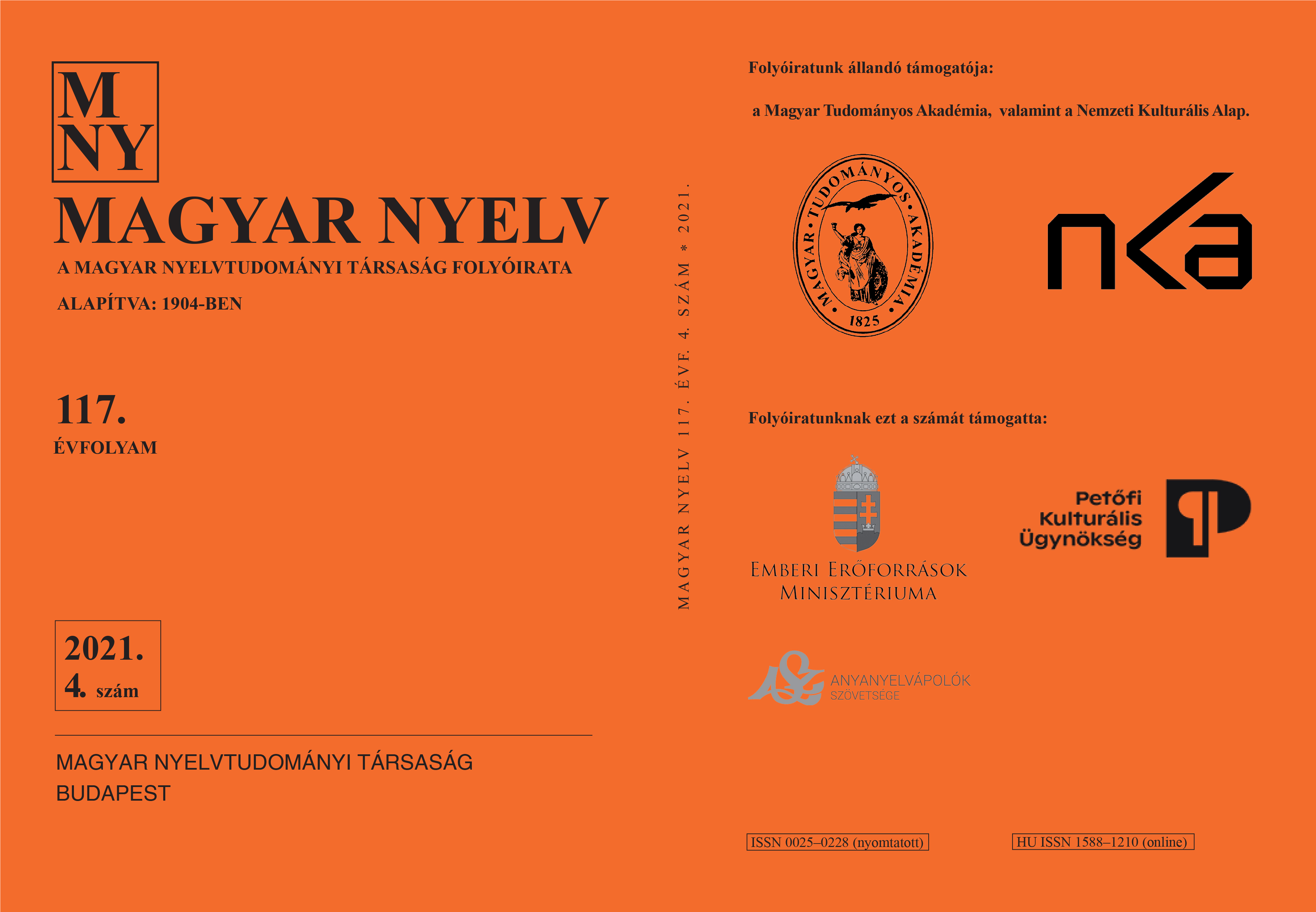Contributions to the history of a group of idioms with the component kasza ‘scythe’
DOI:
https://doi.org/10.18349/MagyarNyelv.2021.4.466Keywords:
early idioms, explanations of idiom, historical phraseologyAbstract
This paper presents a group of obsolete idioms built around a nominal component, kasza ‘scythe’. All members of this group hint at a sudden change of opinion, a coat-turning, phrasing it as ‘cut with the scythe in both directions’ or ‘turn the scythe around’. There are several variants in which the scythe is specified for origin as in boszniai kasza ‘scythe from Bosnia’ or szallai kasza ‘scythe from Szalla’. In addition to giving several early examples, this paper attempts to explain the evolution of the forms. A likely explanation for the reference to Bosnia may be that although short scythes were no longer popular by the end of the early modern period, it could still be seen among Turks advancing towards the north through the Balkans. The reference to Szalla is less clear: one possibility might be that it could be a reinterpretation of salló, a dialectal form of sarló ‘sickle’, as a place name, accompanied by an initial sound change.
Downloads
Published
Issue
Section
License
Copyright (c) 2022 Magyar Nyelv

This work is licensed under a Creative Commons Attribution-NonCommercial-NoDerivatives 4.0 International License.
Magyar Nyelv is a Diamond Open Access periodical. Documents can be freely downloaded and duplicated in an electronic format, and can be used unchanged and with due reference to the original source. Such use must not serve commercial purposes. In the case of any form of dissemination and use, Hungarian Copyright Act LXXVI/1999 and related laws are to be observed. The electronic version of the journal is subject to the regulations of CC BY-NC-ND (Creative Commons – Attribution-NonCommercial-NoDerivatives).
The journal permits its authors, at no cost and without any temporal limitation, to make pre-print copies of their manuscripts publicly available via email or in their own homepage or that of their institution, or in either closed or free-for-all repositories of their institutions/universities, or other non-profit websites, in the form accepted by the journal editor for publication and even containing amendments on the basis of reviewers’ comments. When the authors publicize their papers in this manner, they have to warn their readers that the manuscript at hand is not the final published version of the work. Once the paper has been published in a printed or online form, the authors are allowed (and advised) to use that (post-print) version for the above purposes. In that case, they have to indicate the exact location and other data of the journal publication. The authors retain the copyright of their papers; however, in the case of an occasional secondary publication, the bibliographical data of the first publication have to be included.



